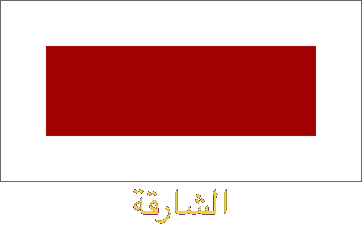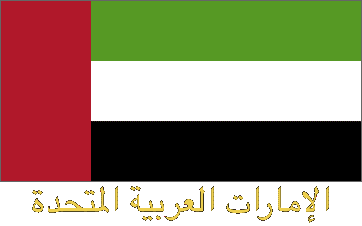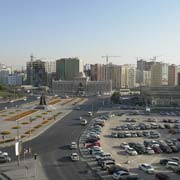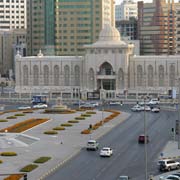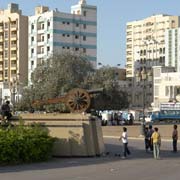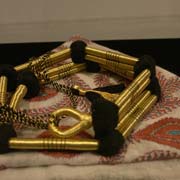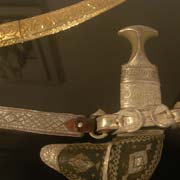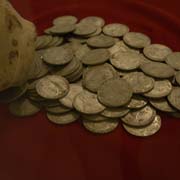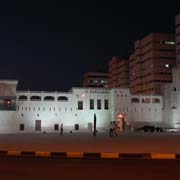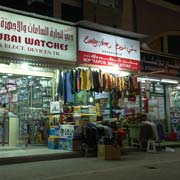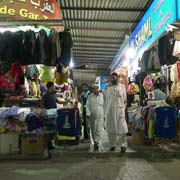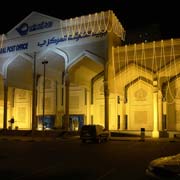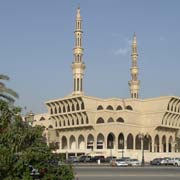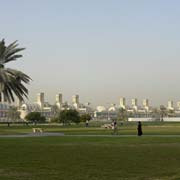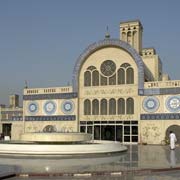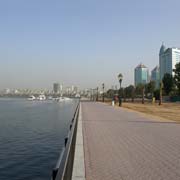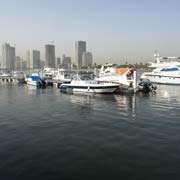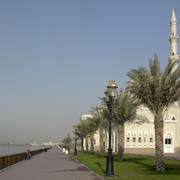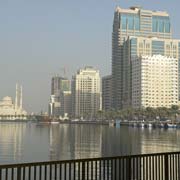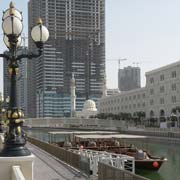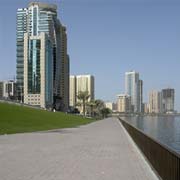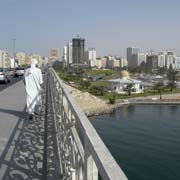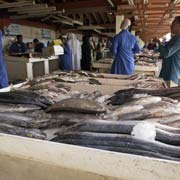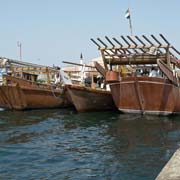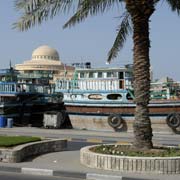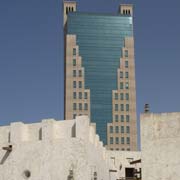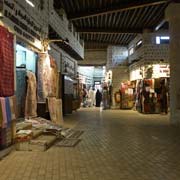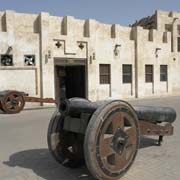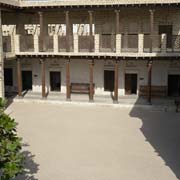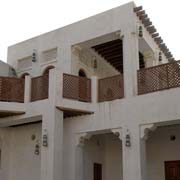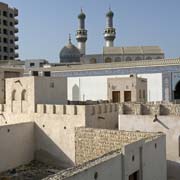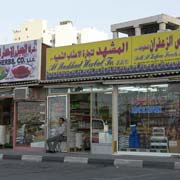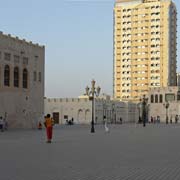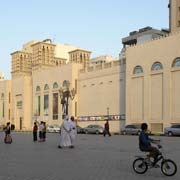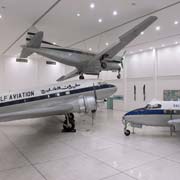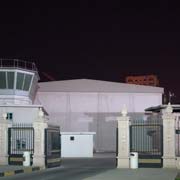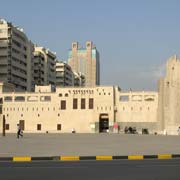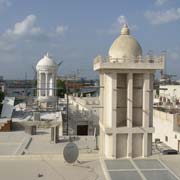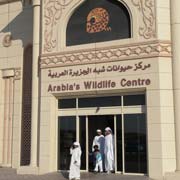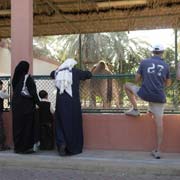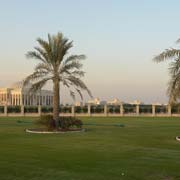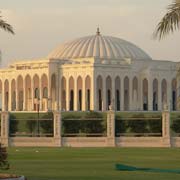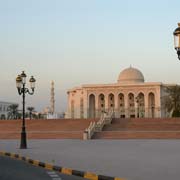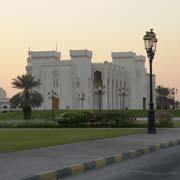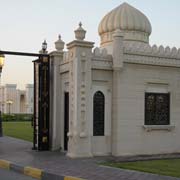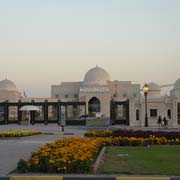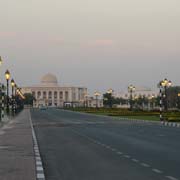Photos of Sharjah, the most traditional Emirate, United Arab Emirates
Sharjah, the most traditional Emirate
Sharjah (or ash-Shariqah when transliterated from the Arabic) considers itself the cultural capital of the United Arab Emirates. It certainly has enough museums, galleries and theatres to deserve this title. It is also the most conservative of the emirates and is in many respects the antithesis of nearby freewheeling Dubai, although both Dubai and Sharjah cities have grown to the extent they just seem to flow into each other.
you may then send it as a postcard if you wish.
Sharjah emirate has an area of 2,600 km² and a population of almost 900,000. The emirate also has authority in its exclaves on the east coast: Kalba, Khor Fakkan and Dibba Al-Hisn. On 2 December 1971, Sheikh Khalid III bin Muhammad al-Qasimi joined the United Arab Emirates. The following year his son, the present ruler Sheikh Sultan bin Mohammed Al-Qasimi III took over; the same year oil was discovered in the emirate.
Sharjah town was historically one of the wealthiest in the region; its occupation goes back more than 5000 years. In the early 18th century the Al Qasimi clan (Huwala tribe) established itself in Sharjah, and around 1727 declared Sharjah independent. The Al Qawasim (plural of Qasimi) also were based in Ra's al-Khaimah and the clan was notorious among the British for the attacks they perpetrated on their ships - hence the name "Pirate Coast" in the early 19th Century. The British, after their fleet had destroyed and captured every Qawasim ship that it had come across and occupied all the major forts in the area, imposed a General Treaty of Peace on all rulers in the region. On 8 January 1820, Sheikh Sultan I signed the General Maritime Treaty with Britain, accepting a protectorate; this would also help to keep the Ottoman Turks out from this part of Arabia. During the period of British reign over the Trucial States, Sharjah was considered the most important, explaining why the first airport in the region was here: the first Imperial Airways flights arrived in 1932. The control tower, hangar and adjacent buildings have been preserved and are now the Al-Mahattah Museum, with interesting displays of planes and equipment from that time.
Sharjah City is an attractive city with Government House opposite of which are the monumental Central Post Office building, King Faisal Mosque, financed by Saudi Arabia and the Central Souq (also called New or Blue Souq), with its striking architecture and small upstairs shops selling carpets and jewellery from the Middle East to Central Asia. The Heritage Area, just inland from the Corniche along the waterfront, has beautiful buildings, lovingly and traditionally restored. Some display the "Barjeel", the wind towers that provide a type of air conditioning; an unusually shaped round wind tower that can be seen on the Majlis al-Midfaa building. There are traditional houses, now museums, like the Bait Obad Bin Eissa al-Naboodah. But pride of place should go to the Souq al-Arsa, the oldest souq in the UAE, beautifully restored with its "'arish" palm leaf roof and as a concession to modernity it is now fully enclosed and air conditioned!
The most iconic sight is the Al Hisn Fort, a real masterpiece of old Arab architecture in the centre of the city. It was built in 1820 by Sheikh Sultan bin Saqr Al Qasimi and was the residence of the Ruling Family. However, the building was partially demolished in 1969 during restructuring in the vicinity. Under instruction of the present ruler of Sharjah, Sheikh Sultan bin Mohammed Al Qasimi, the building has been rebuilt, exactly to its original shape and style. It is now a museum with fascinating historical and cultural exhibits.
The central city surrounds Khalid Lagoon, with impressive views. Walking along it, Al-Qasha canal is reached, linking Khalid Lagoon with Al-Khan Lagoon to the west. Sharjah Maritime Museum and Aquarium is located at Al-Khan Lagoon. Dhows, wooden trading vessels, may be seen along Khalid Lagoon (or Sharjah Creek) on Corniche Road in the Heritage Area of Sharjah City.
About 15 kilometres from the City is University City, a large educational district of higher learning, artificially greened, with extensive lawns, flowers and fountains. The architecture is really worth seeing and reflects the importance of higher education in the Emirates. Here is the American University of Sharjah, the Higher Colleges of Technology (Sharjah Men's College and Sharjah Women's College) and the University of Sharjah. There is also the Sharjah Police Academy, the Sharjah Teaching Hospital and the Sharjah Library.
